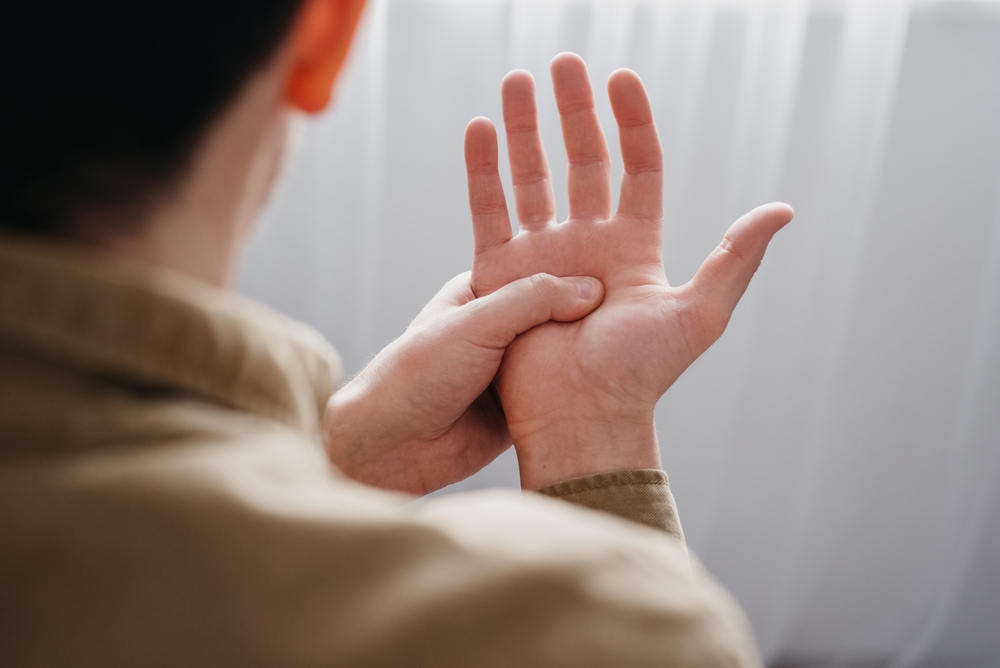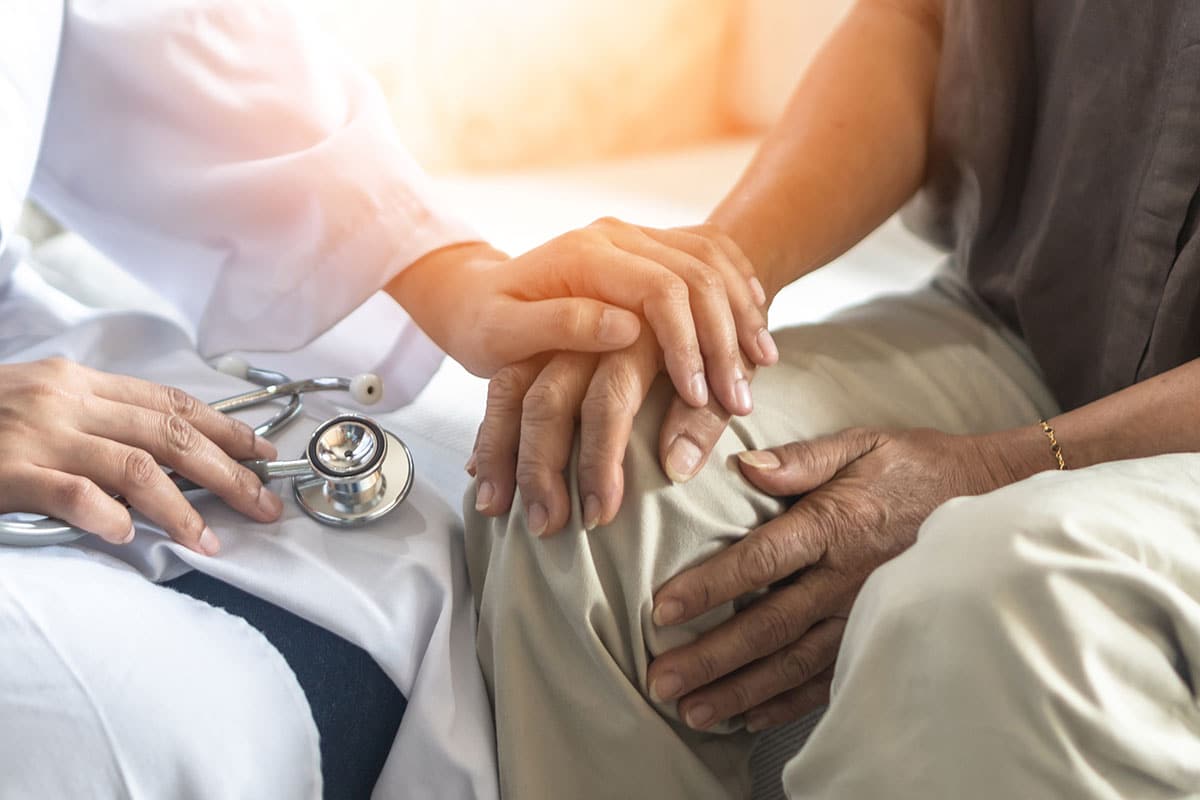Deep brain stimulation (DBS) can provide symptom relief from Parkinson’s disease and essential tremors that lasts for several years, with many patients continuing to benefit 5 to 10 years after surgery. It does not stop the condition itself, but it can make daily movement and function easier to manage over time.
DBS helps reduce tremors, stiffness, and other motor symptoms in people with neurological conditions like Parkinson’s disease. Dr. Alexander Taghva, a board-certified neurosurgeon with advanced training in DBS, offers guidance to help patients understand what to expect and how results may change over time.

DBS Is Not a Cure but a Way to Slow the Decline
- Many patients feel a 50 – 70% drop in tremor or stiffness within months and retain most of that benefit five years later. (Source: PMC)
- Batteries in today’s rechargeable pulse generators can last 9 – 15 years; non‑rechargeable units usually need a swap at 3 – 5 years.
- DBS eases motor symptoms but cannot halt disease progression, so non‑motor issues (fatigue, balance) may return after 5 – 10 years.
- Fine‑tuning visits are common during the first six months and then taper off to a few times a year.
- Long‑term success hinges on the right target (often the subthalamic nucleus in Parkinson’s disease) and a care team that tracks you for life.
How Long Do the Benefits of Deep Brain Stimulation Treatment Usually Last?
Most people notice the biggest jump in symptom control during the first few weeks of programming. Large reviews show average motor‑score improvements of roughly 60 percent in well‑selected patients, with results holding steady for at least five years in the majority of cases. Beyond ten years, tremor control often remains robust, although gait and balance may decline as the underlying disease advances.
What Patients Can Expect in the First Year After Deep Brain Stimulation
The first twelve months are an “optimization phase.” You will see your neurosurgeon and programming nurse several times to fine‑tune voltage, pulse width, and frequency settings while trimming medications. In this window:
- About 60–90% of patients experience significant tremor and motor symptom improvement in the first few months.
➤ Source: https://www.ncbi.nlm.nih.gov/pmc/articles/PMC6437335/ - Device adjustments are common during the first 3–6 months.
➤ Source: https://www.parkinson.org/Understanding-Parkinsons/Treatment/Surgical-Treatment/Deep-Brain-Stimulation - Many people cut their Parkinson medication by one‑third to one‑half, reducing “off” time and drug‑related side effects.
➤ Source: https://pmc.ncbi.nlm.nih.gov/articles/PMC4065356/

Patients Testimonials
How Deep Brain Stimulation Results Hold Up After 5 Years
By the five‑year mark, studies of patients with Parkinson’s disease show:
- One study showed that motor improvements from DBS can last at least 5 years in most patients.
➤ Source: https://movementdisorders.onlinelibrary.wiley.com/doi/10.1002/mds.23763 - Around the 5-year mark, some patients may experience a gradual return of non-motor symptoms.
➤ Source: https://www.ncbi.nlm.nih.gov/pmc/articles/PMC2857205/
Regular check‑ins—usually every six to twelve months—let your team adjust stimulation parameters and medications to match changing symptoms.
What Long‑Term Studies Show 10 Years After Deep Brain Stimulation
Ten‑year data are encouraging:
- A study published in “The Lancet Neurology” followed patients with Parkinson’s for 10 years after DBS and found that while tremor and motor symptoms remained significantly improved, patients required ongoing follow-up due to the progression of non-motor symptoms.
➤ Source: https://www.thelancet.com/journals/laneur/article/PIIS1474-4422(18)30393-1/fulltext - A 10-year study found tremor control remained stable, and many patients still reported improved quality of life.
➤ Source: https://www.ncbi.nlm.nih.gov/pmc/articles/PMC4635874/ - Rechargeable neurostimulators may last up to 15 years, but non-rechargeable ones may need replacement every 3–5 years.
➤ Source: https://www.frontiersin.org/articles/10.3389/fneur.2020.00289/full

Best Neurosurgeon in Orange County
Dr. Taghva specializes in the treatment of neck pain, low back pain, sciatica, brain tumors, Parkinson’s disease, as well as other conditions requiring brain or spine surgery.

What Happens to the DBS Device Over Time
Because DBS is powered by an implanted pulse generator (IPG) similar to a pacemaker, some upkeep is inevitable. Your care plan includes routine checks to be sure the system is delivering the right dose of electricity and that the battery has plenty of charge left.
How Long the Battery Usually Lasts
Most non‑rechargeable IPGs run 3 – 5 years, depending on settings and daily use. Newer rechargeable units—now chosen by the majority of patients—are built to last 9 – 15 years before surgical replacement is needed. Your programmer tablet or handset shows battery status, and your team will schedule replacement early to avoid an unexpected shut‑off.
When You Might Need Device Adjustments
Even after batteries are swapped, the DBS lead stays in place. You might need a quick clinic visit to:
- Counter new symptoms that occur as the disease advances.
- Adjust stimulation around MRI studies or other surgeries.
- Conserve battery life by lowering unnecessary amplitude.
These sessions are outpatient, comfortable, and often last under 30 minutes.
Why Your Doctor May Need to Reprogram It
Medication changes, lifestyle shifts (such as more exercise), or new side effects like tingling or speech changes can signal that it is time for fresh settings. Modern systems support multiple “programs” you can activate at home with a press of a button—handy for on‑the‑go symptom control.
Is Deep Brain Stimulation the Right Step for You?
DBS is reserved for patients whose symptoms interfere with work, hobbies, or basic self‑care despite optimized medication. Early referral—before balance problems and memory issues set in—gives the best chance of a smooth surgery and strong, long‑lasting benefit.
Who May Benefit Most From This Treatment
Before the first consultation, many people picture DBS as a “last resort.” In reality, the following groups often do well:
- Adults with advanced Parkinson’s disease who have troublesome motor fluctuations or dyskinesias.
- Patients with essential tremor that limits handwriting, eating, or computer work.
- Individuals with dystonia or medication‑refractory tremor syndromes after thorough neurological work‑ups.
These conditions respond best when motor loops—especially the subthalamic nucleus or globus pallidus internus—are precisely targeted.

What Makes Someone a Good Candidate
Ideal candidates generally have:
- A clear diagnosis confirmed by a movement‑disorder specialist.
- Motor symptoms that improve with levodopa.
- Reasonable overall health without uncontrolled heart or lung disease.
- Realistic expectations and a support person who can help manage the device.
When It Might Be Time to Consider DBS
Red flags that suggest “medical management” is no longer enough may include:
- More than four hours of “off” time daily despite medication changes.
- Dyskinesias that embarrass you or cause pain.
- Tremor that makes eating, dressing, or writing difficult.
- Frequent dose changes or nighttime alarms to stay mobile.
If this sounds familiar, scheduling a DBS evaluation sooner rather than later can preserve independence and quality of life.
Why Experience Matters When Choosing a DBS Neurosurgeon
DBS requires millimeter‑level accuracy and lifelong follow‑up. Complication rates are lowest and symptom gains highest when surgery is performed at centers that do 50+ implants a year and offer in‑house programming expertise.
How Dr. Alexander Taghva Approaches Long‑Term DBS Care
As Orange County’s only fellowship‑trained functional neurosurgeon, Dr. Taghva has implanted hundreds of DBS systems and serves as a principal investigator on several neuromodulation trials. His team uses advanced imaging to map the subthalamic nucleus, intra‑operative micro‑recordings for pinpoint lead placement, and remote‑monitoring tools that let you upload symptom logs from home. Routine battery checks, programming visits, and physical‑therapy referrals are bundled into a single care plan so you are never left guessing.
Schedule a Visit With Dr. Taghva Today
If shaky hands, rigid muscles, or medication roller‑coasters are stealing your good days, DBS could hand them back. Call 949‑403‑6912 or use our secure online form to request a consultation in Orange County, CA. Together, we will review your case, discuss realistic outcomes, and map a treatment timeline that protects your future mobility. The sooner you act, the sooner you can get back to the life you love.
Frequently Asked Questions About DBS Longevity and Care
Most patients experience some symptom relief as soon as the device is activated, usually a few weeks after lead placement. The biggest changes unfold over the next three to six months as your care team refines voltage and frequency settings. During this “dial‑in” stage, it’s common to feel steadily better each week as stimulation and medication reach the ideal balance for your brain and lifestyle.
Short answer—rarely. In day‑to‑day life, the system runs around the clock. You may be asked to power down temporarily before certain medical tests or surgeries that generate strong electromagnetic fields. Modern systems make this easy: you simply tap a handheld controller to pause therapy and tap again to resume once the procedure is over. Your neurologist will walk you through exactly when—and when not—to do this.
A gradual return of tremor or stiffness doesn’t necessarily mean the device has failed. Often, a quick programming tweak or an adjustment to medication restores control. If your neurologist rules out progression of the underlying disease, battery depletion or lead impedance issues can be checked in clinic within minutes. The takeaway: keep your follow‑up appointments so small problems never have a chance to snowball.
Yes, but probably less of it. Most people can cut their levodopa dose by 30 – 50%, which helps limit dyskinesia and “off” periods. A few may taper even further, while others need a modest increase over time as Parkinson’s progresses. DBS and medication work together, so think of the stimulator as a partner—never a lone ranger—in your symptom‑control plan.
